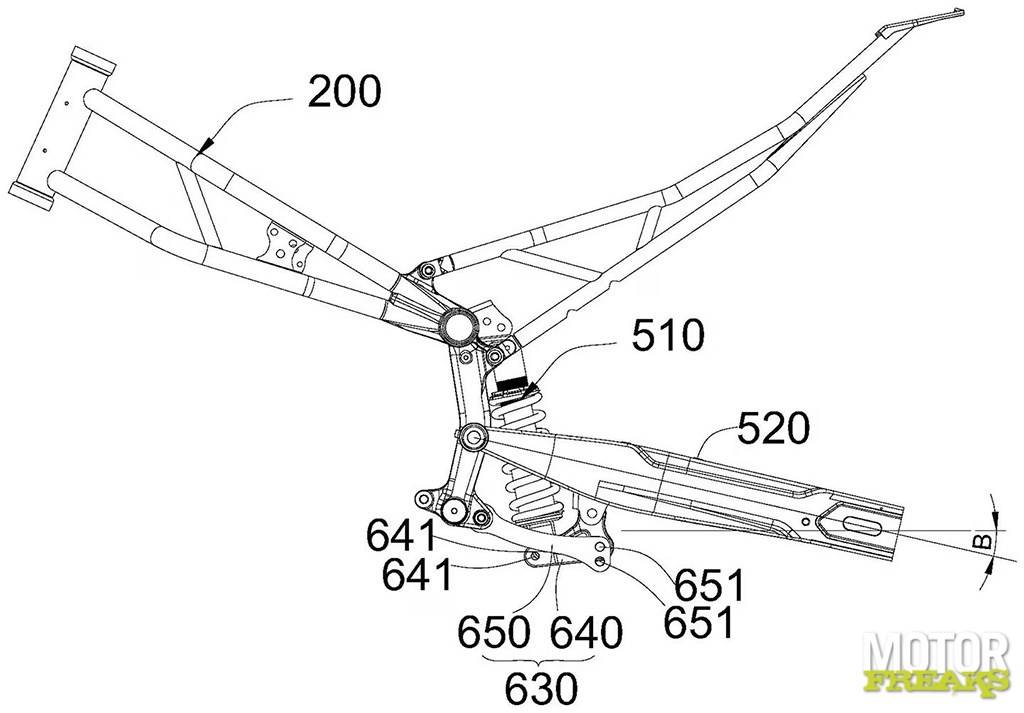In MotoGP they will be banned from 2027, but more and more manufacturers see the advantages of ride height systems, especially on heavy Allroads to make it easier to get on and off. CFMOTO develops a super simple system that allows the ride height at the back to be adjusted with a handle in seconds, without tools or complicated electronics.

No part of a motorcycle’s chassis has such an immediate impact on its handling as a ride height system for the rear shock, better known in MotoGP as the Ride Height Adjuster. Jack up the rear and the bike will steer sharper thanks to the steeper steering head angle and create more pressure (and therefore feeling) at the front, but will also be less stable because of the shorter trail.
Conversely, lowering the rear makes for more relaxed handling, while at the same time lowering the center of gravity and thus greatly reducing wheelie tendency. That was why Ducati had devised the system for MotoGP.
In MotoGP they have gone a step further, by developing ride height systems for both the front and the rear with the aim of lowering the centre of gravity and thus being able to be launched like a dragster at the start and out of corners. The system for is now only allowed at the start, in 2027 both systems will be banned when the new regulations come into effect.
Harley-Davidson was the first brand to see the advantages of a ride height system for the street and launched it on the Pan America 1250. When activated, the rear ride height is automatically lowered when stationary, to better put the feet on the ground. In the meantime, almost all brands have introduced similar systems on their heavy Allroads.
Meanwhile, there is a growing interest in variable height air suspension systems, especially on cruiser models developed by Chinese manufacturers. However, the new idea from CFMOTO is much less complex than that and although the ride height cannot be adjusted automatically or while driving, it is just as easy to adjust as the separate (hydraulic) knob for adjusting the spring preload.

The CFMOTO system is designed for motorcycles with monoshock rear suspension and without progressive linkage. In its original form, you can choose between three ride heights (high, medium or low) via a hand wheel mounted where the rear shock is bolted to the swingarm.
Instead of a fixed lower mounting bracket for the monoshock, the lower eye of the shock absorber is attached to a shaft with a toothed gear that moves in a toothed plate. The hand wheel is on the other end of that shaft. Turning the hand wheel clockwise moves the lower mounting of the shock absorber forward, raising the rear of the bike, and turning the hand wheel counterclockwise moves the mounting rearward, lowering the ride height.
To prevent the system from moving once you have selected the desired position, there are three spring-loaded metal balls in the lower mount. These drop into notches in the axle when it reaches the forward, rearward or centre position, creating a locking point that requires extra force to overcome.
It’s a simple, inexpensive system that promises ease of use and should have a pretty radical impact on a motorcycle’s handling.
The same CFMOTO patent application that reveals this design also lists two alternative setups, each of which also offer different ride heights, but without the easy adjustment of the first version.

The first variation is a simple multi-position top mount for the rear shock, secured to the frame with two bolts, but with four evenly spaced holes for those bolts to fit through. Again, this means you have three ride heights, but if you want to switch ride heights you’ll need a tool and to support the rear of the bike while you adjust the mounting position of the rear shock.
The third variation of the idea in the patent application is a multi-adjustable link system, with multiple holes for both the upper and lower eye of the rear shock. This would not only have the advantage of being able to adjust the height of the rear suspension, but also the degree of progressive action.
However, this too requires tools and the rear of the motorcycle to be supported while the shock is installed, making it much less attractive than the quick-adjust system at the heart of the patent application.

– Thanks for information from Motorfreaks.